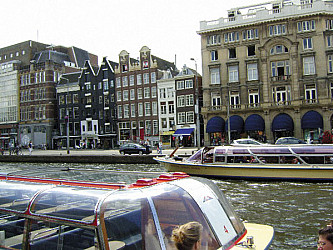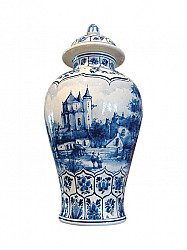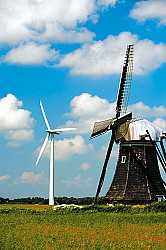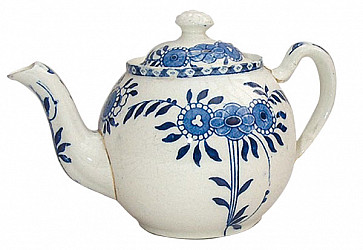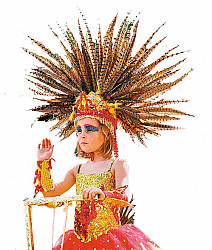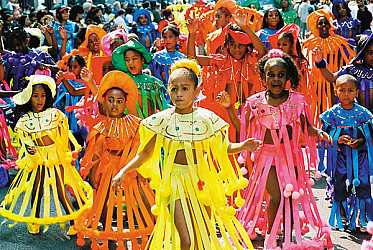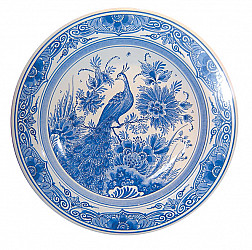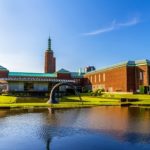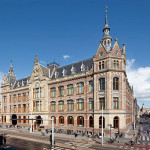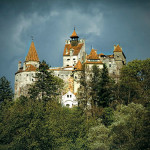Cruising The Canals
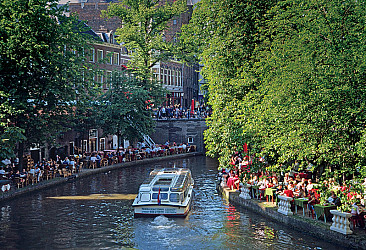
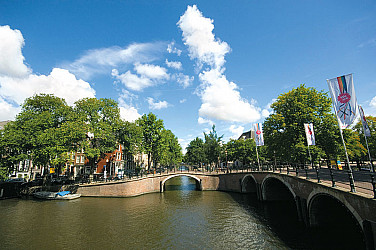
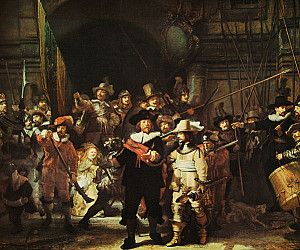
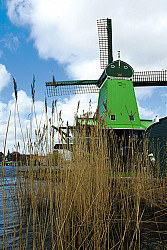
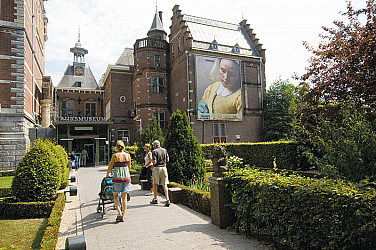
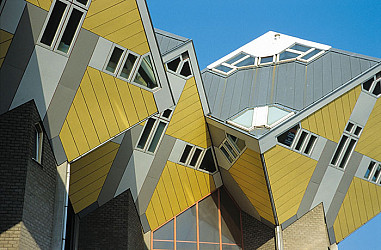
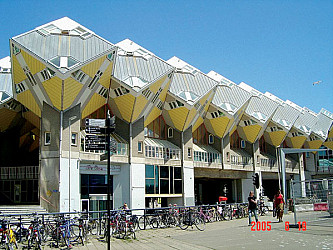
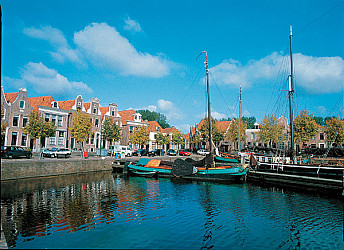
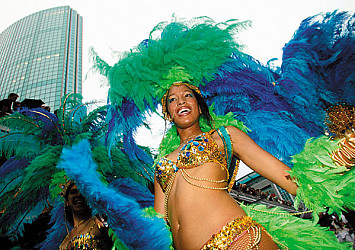
It is a moment of serendipity. Not one to fall into line behind well-meaning guides and rediscover history through the drone of well-rehearsed spiel, a soul sister and I drift away from our group and find ourselves in front of The Nightwatch. Dutch painter Rembrandt’s most famous work confronts us in all its 13 by 16 feet magnificence. The famed canvas will always be known by an incorrect title, since when the artist painted them, the civic guards were not required to defend Amsterdam or go out on any ‘watches’.
We move towards the dolls’ houses, exquisite blue pottery, 17th century realism and other treasures in Amsterdam’s historic Rijksmuseum, and suddenly stumble upon it again. Peering at the canvas once more, and absorbing the transformation of the traditional group portrait commissioned by Captain Banning Cocq – visible in ‘sashed’ splendour – into a dazzling blaze of colour, light and motion, we hover around miniature versions of the masterpiece replicated on magnets, postcards, mugs and key rings in the adjoining souvenir shop. When we finally catch up with the slow moving others, we find them pondering over the complexity of The Nightwatch!
Moments later on the street, our group of eight is divided about touring the House of Anne Frank or the Van Gogh Museum. Decision made, we go our separate ways to meet again on the steps of Dam Square that flanks the Royal Palace and board a boat for the canal cruise, an all encompassing way to acquaint oneself with Amsterdam. The 90km of Venetian-style canals and over a 1000 bridges may seem like a romantic architectural quirk to the uninitiated, but the capital of The Netherlands is entirely built on a foundation of wooden piles so that it doesn’t flood over! Gliding along the Amstel River from which the city gets its name, we pass moored barges in which people live (in one, a couple cocooned in lounge chairs is sipping coolers on the deck while a dog rolls at their feet) and cottages whose gardens are fringed by a gentle splash or two. We even spot a speedboat inhabited by a chic set indulging in an elaborate picnic spread on the water. And bordering the river is expensive real estate; former warehouses of wealthy merchants, now refurbished into posh apartments and offices.
Like most small cities of Europe, Amsterdam is best explored on foot or if a local gets his persistent way, on a bicycle. We encounter more cycles than cars or trams and learn very quickly how to leap out of the way of speeding cyclists, albeit in their own lanes. You can walk north to south from one end of the city centre to the other end in 45 minutes and from east to west in even less time. We stop at flower shops boasting beautiful bulbs, rummage through Kalverstraat, the hip street of sales and stroll through the 17th century Jordaan’s cutting-edge boutiques, before settling into chairs at the al fresco family-owned Beems Brasserie. The prawns are crisp, duck, finely roasted and fish, tender on the palate. All accompanied by the biggest and thickest French fries seen this side of the continent.
If it’s Amsterdam, the world famous red light district has to beckon and we collectively decide to whet our curiosity even though the men in our group seem slightly uncomfortable. It turns out to be the most vibrant venue of the city and not just for obvious reasons! More notorious for its tourist lore than lure, the colourful street flashes its wares with a neon-lit pride. Yes, the strip clubs, sex shops, fetish parlours, cheerfully coexist with some fine coffee bars and their varied aromatic wares, but it is the ‘window ladies’ who attract the most eyeballs. First appearing in the 18th century when Amsterdam’s bustling port offloaded inebriated sailors looking for fun on the shore, the skimpily-clad Barbie doll clones, who hail from all corners of the world, occupy claustrophobic transparent chambers and pose inside, mostly with bored expressions. Someone behind us attempts to click a forbidden picture and promptly gets hit on the head with the beer can the woman is drinking from!
In the morning we see our first windmill. Proud sentinel of a poignant past, when windmills generated power to pump out water into the sea from a country of which two thirds lies below sea level, it still does not prepare us for the wondrous spectacle of a row of them at Zaanse Schans, a village on the banks of a languid Zaan River, 80 km from Amsterdam. Whirling slowly in the afternoon breeze, these 18th century icons of The Netherlands are the little village’s claim to fame which is overrun by tourists madly clicking pictures of the arm-waving giants and sheep the size of cows.
The highlight of our visit? Keeping an appointment in the basement of Dye Mill De Kat with a very tall, weathered, old miller who regales us with stories of three decades ago and even takes off his shoes to demonstrate the correct way to wear clogs! Twenty-eight families live in these idyllic surroundings and were it not for the typical tourist traps of a dozen souvenir stores, vast Gouda outlets and indifferent cafeteria fare, this compact village would retain its very old-world charm. My museum companion points to a ‘Nightwatch’ brooch and we examine it only to see if all the characters are in place.
Skimming through Voorhout, where the tulips have been in bloom for 400 years from March to May, our Mercedes Benz mini van makes a smooth turnoff into the international city of The Hague, the seat of government of The Netherlands. 80,000 permanent residents (38,000 are expats) live in a pristine space nurtured by parks, canals, woods, spotless streets…. An invisible divide exists between the haves and have-nots on the other side of the Scheveningen beachfront in this international centre for peace and justice, where ruling monarch Queen Beatrix arrives in a golden coach every September to open the Parliament. In a place teeming with art galleries, monuments and museums, the most crowded areas are the booths serving up the typical Dutch snack of raw herring and onion. Three adventurous members of the group join the queue and pronounce it lip-smacking good. I take their word for it!
Gathering our trenchcoats and Pashminas around us, we then bravely walk into the wind and find ourselves being led to a table at Cloose, an open air Italian eatery in The Hague’s trendy Pleine area. Here, a chaotic melange of sidewalk cafes and restaurants clatter steadily along till dawn all through the summer months. Millers, the bar opposite Cloose stays open till 4am, with not a single street sound penetrating the watertight insulation of the apartments above. According to the managers, most of them from Surinam, who run the businesses, the Dutch veer a lot towards Chinese and Vietnamese cuisine with Italian coming a close second.
At 9am, Rotterdam, the largest city of The Netherlands and busiest port in Europe is a ghost town. Located on the heaving edges of the Maas River, Rotterdam was reduced to rubble during World War II and spent the next few decades rebuilding itself. It is not a good looking city but an interesting one. In a confused skyline of strange structures, a few are truly fascinating like the 1984-built ‘cube houses’ designed by Dutch architect Piet Blom and Euromast, the 185m tower with a simulated space cabin. At 1pm, following an introduction to the city’s gritty arts scene, just as we are digging into oversized platters of meats and salads at Turkish restaurant Bazaar, it is as if an enormous capsule has burst open setting free masses of humanity that pour forth from every little street to converge onto the main one. Setting up their foldable stools and bulging picnic hampers, Rotterdam’s population elbows itself out to front row seats in anticipation of the spectacular annual carnival. Waking up from its morning stupor, the city throbs to loud Carribbean beats as the outrageously dressed, in feathers and fur, lead extravagant floats along the route. Hot dog stands come up, children travel on their fathers’ shoulders, beer flows and we hold hands and walk in line for fear of being swallowed up by the burgeoning crowd. Recovering a bit with latte macchiatos at the legendary Maritime Cafe on the wharf we head back to The Hague for a Vietnamese dinner under the stars.
Delft, 12km south of The Hague is where you fall under a spell. This fairytale medieval town so captured the heart of a commander during the German Occupation of World War II that even under orders to destroy it, he could not. William of Orange was murdered here, the topmost artist of the Golden Age, Johannes Vermeer painted his masterpieces along the cobble-stoned alleys and arched bridges and the Chinese-inspired blue painted porcelain put the town on the international map. We are in time for the gay parade that always takes place the day after Rotterdam’s flamboyant fest. Elaborately decorated floats glide along the waters, to the cheering and clapping of crowds lounging on the grassy banks. Contrary to the crackling energy of the previous day, this is a more chilled out event where popcorn and candy is passed around freely to those who stand and stare.
Possibly the prettiest town of The Netherlands, Delft is shopping heaven for the quality-conscious and the lover of the innovative. The Senz storm umbrella, recipient of a prestigious design award and the singing egg that belts out a different melody for soft, medium and hard boiled are must-buys. But it is the signature blue pottery that seduces us into the stores. We drive over to Royal Delft, a 17th century factory and workshop where you can participate in the production process and paint your own plate. During the archival tour, my companion and I halt mid-step. There it is again. The Nightwatch, recreated in over 400 blue tiles, almost like a jigsaw puzzle, looking us straight in the eye!
GAPE at the newly cut brilliance of the Gassan 121-faceted diamond and buy a stone for yourself at Gassan Diamonds, Amsterdam, the largest of its kind in the world.
LIVE your own red carpet moment as you ascend the theatrical staircase at Little Buddha, Amsterdam, the latest lounge bar export from Paris.
DARE to stand out in a playful Donna Fiera dress from her label at Nine Streets, the distinctive canal-hugging district in Amsterdam that houses specialty stores.
SWAY to retro beats at the Rotterdam dance club WATT where an ingenious electromechanical system converts the dancers’ movements into electricity to light up the floor. Sustainable dancing!
BITE into an authentic Droste pastille, the chocolate confection made famous by Gerardus Droste in 1863.
REVEL in the rejuvenating power of a Gamila handmade soap infused with a secret blend of 15 local herbs and olive oil, crafted by an illiterate Druze woman, Gamila, now head of the factory!
Related posts from Verve:
Verve Trending
Sorry. No data so far.
us on Facebook to stay updated with the latest trends

